Recently, I returned to the former Burmese capital, Yangon, for two weeks. Myanmar earns its nickname, the Land of Golden Pagodas, with pride, and at the heart of this bustling city lies the renowned Shwedagon Pagoda. Beyond exploring the holiest Buddhist pagoda in Myanmar, the city boasts numerous other attractions. Although tourism has received encouragement since 1992, it’s only in recent years that the country has experienced a surge in visitors. In my previous article about Myanmar, I covered things you shouldn’t miss while you’re travelling through. In this addition, I will be delving further into Yangon.
Yangon (also known as Rangoon) is the biggest city in Myanmar, home to over 6 million people and it is the commercial and political hub. As the city develops, the Yangon Skyline is continuously changing with skyscrapers and condominiums popping up. Despite this move towards modernisation, the city’s infrastructure is trying to keep up. While there, we lived in Upper Yangon so the journey to Downtown Yangon would take 45 minutes (instead of 20 minutes) mainly due to the intense traffic.
Tip: If you are planning on taking the taxi, take into account the traffic – especially if you’re going from Downtown Yangon to the Bus Station or Airport.
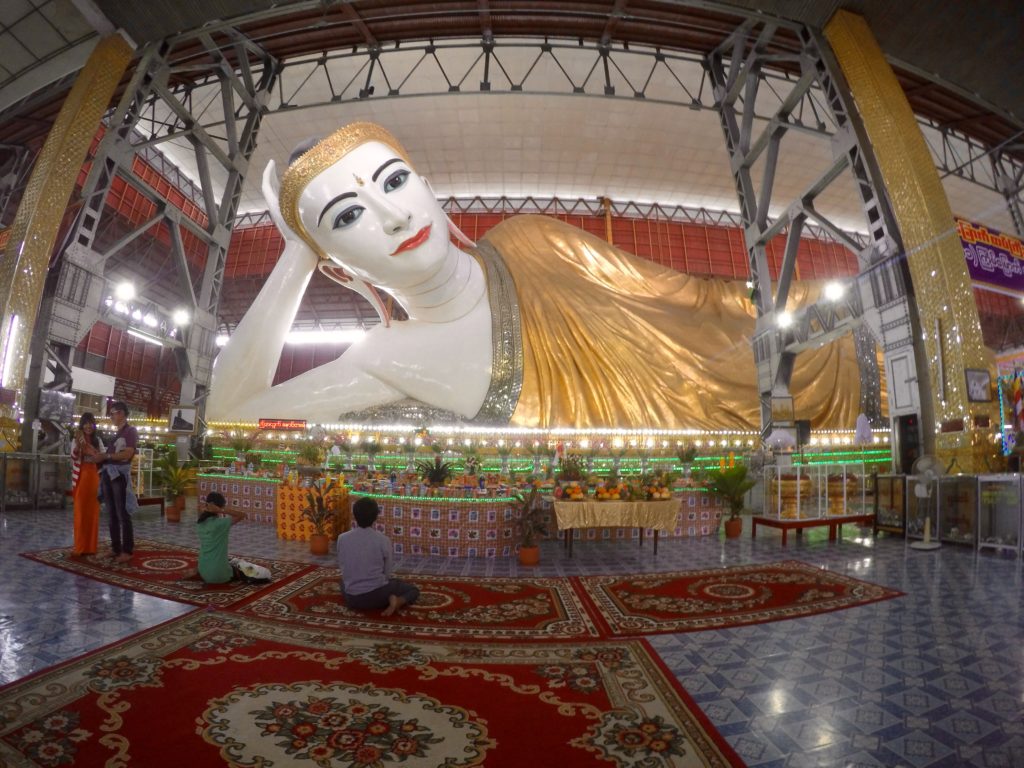
Chaukhtatgyi Paya (Reclining Buddha)
The western Burmese town of Bago is home to the country’s famous reclining Buddha (Shwethalyaung Buddha). However, this statue is only 55 meters long while the Chaukhtatgyi Buddha is measured at 65 meters and as a bonus, it is located 10 minutes from Shwedagon Pagoda. Entry to this temple is free but there are donation/offering boxes placed along the entrance and near the prayer space.
In comparison to my first visit, there has been an influx of bus loads of tourists visiting the temple. To avoid the crowds, I would advise to visit in the morning or later in the day. The temple is easy to get to (1000 – 2000 kyats by taxi from Shwedagon Pagoda) so you don’t have to join a tour.
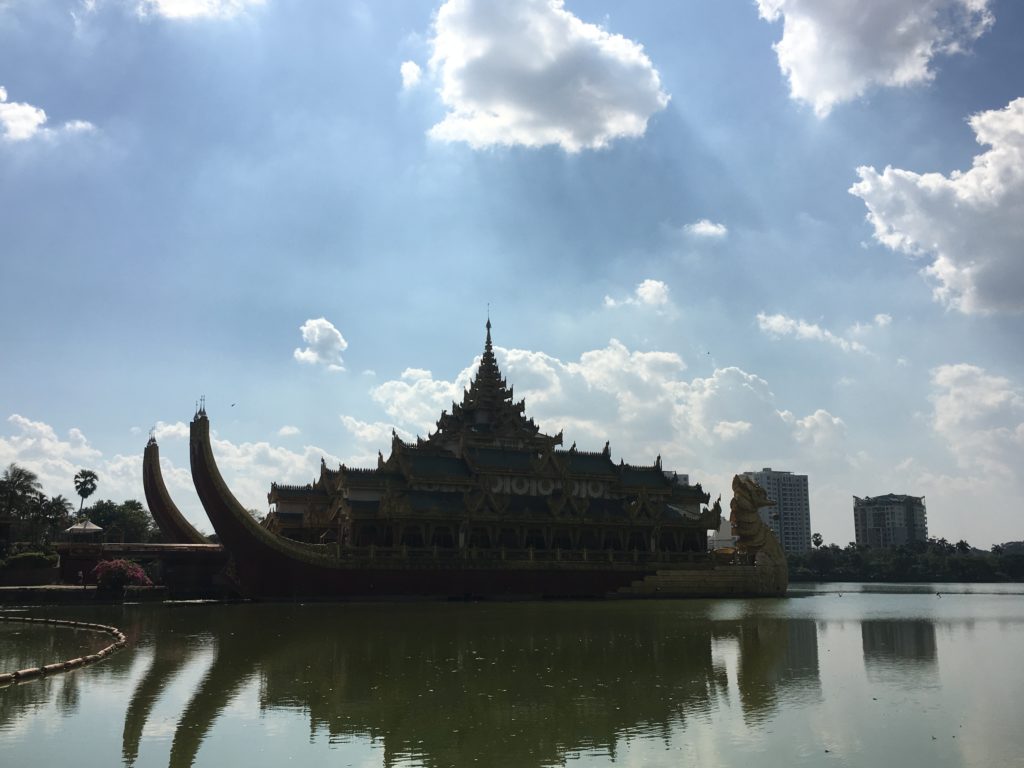
Kandawgyi Park
Located near Downtown Yangon and Shwedagon Pagoda, it is a lovely place to escape the chaos. It isn’t a natural lake, built by the British during colonial times. There are no entry charges for locals. Foreigners, on the other hand, have to pay 300 kyats (AUD$0.30) and an extra 500 kyats if you’re bringing in a camera (camera phones are exempted).
On the surrounding banks of the lake are endless food and beverage options, mainly catering to the local or various South East Asian region cuisine. If you fancy a cafe out of the ordinary, YGN Bus Cafe is a converted bus cafe serving up some delicious frappes. Floating on the east shore of the lake is the centrepiece, Karaweik Palace, which is now a converted restaurant enjoying cultural entertainment while dining.
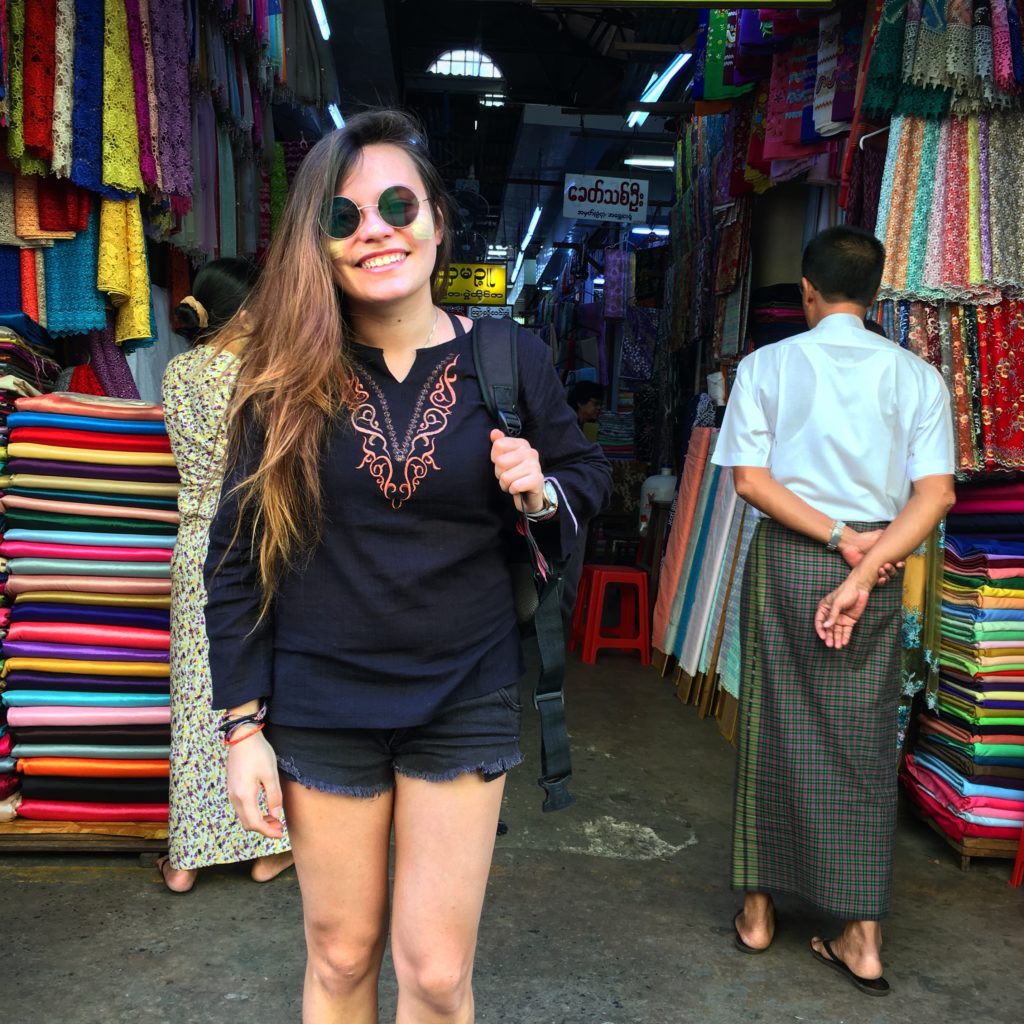
Bogyoke Aung San Market
Set in an old colonial building in the heart of Yangon, Bogyoke Aung San Market is a major tourist destination of the region. There are endless stalls selling longyis amongst other things. While there are other local markets scattered across the city, this is by far the biggest. Apart from selling fabrics and souvenirs, there are local food shacks located between the alleys serving up local cuisine and fresh fruits while you dine on little plastic stools and tables.
It is not uncommon to see Burmese women sporting a pale yellow paste on their cheeks (or other parts of their face). This paste is known as thanaka made from ground bark and is used for cosmetic purposes and as a sunscreen. There are several stores selling this product. Alternatively, if you ask, they may let you try it.
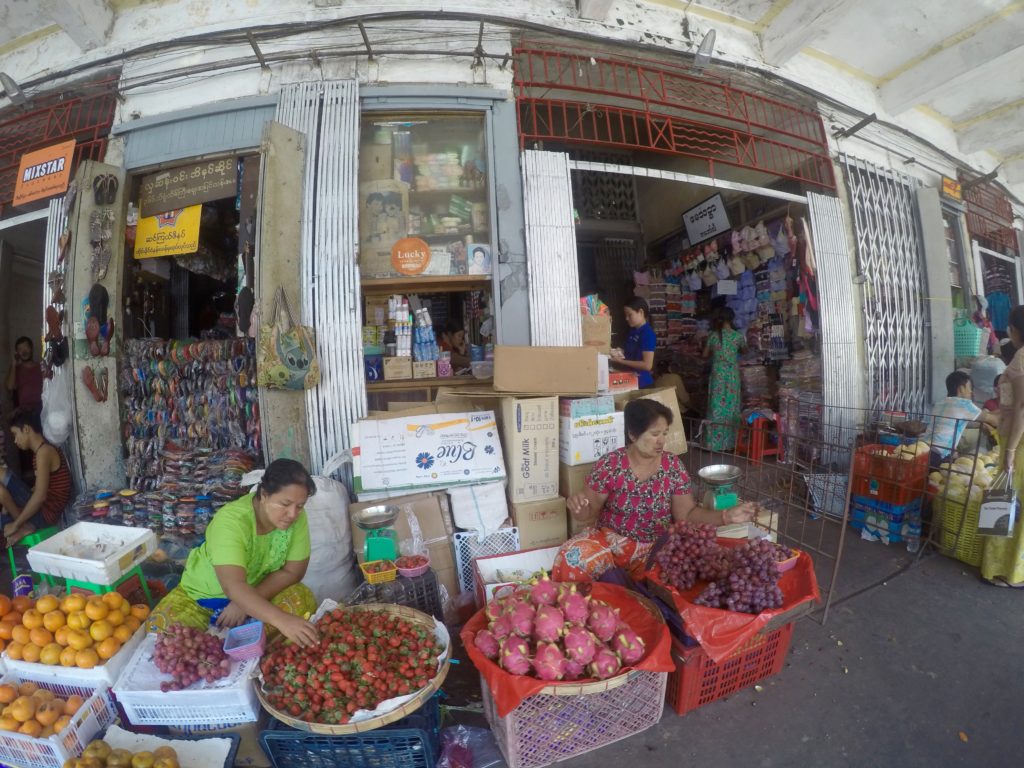
Chinatown
Most countries have a Chinatown and Yangon is no exception. Located downtown, most of the affordable accommodations can be found here. During my first visit to Yangon, I stayed in a hostel hidden in one of these alleys. The local life and street markets come alive every day. Feel free to observe the locals selling clothes, longyi, daily fruits and produce along the side of the roads. It is quite an organised chaos. Within this area, there are 3 places of worship to visit (a mosque, Hindu temple and Buddhist temple). Further down towards the east side is Sule Pagoda. With an entry fee of 3000 kyats, it located in the centre of the roundabout, quite easy to spot.
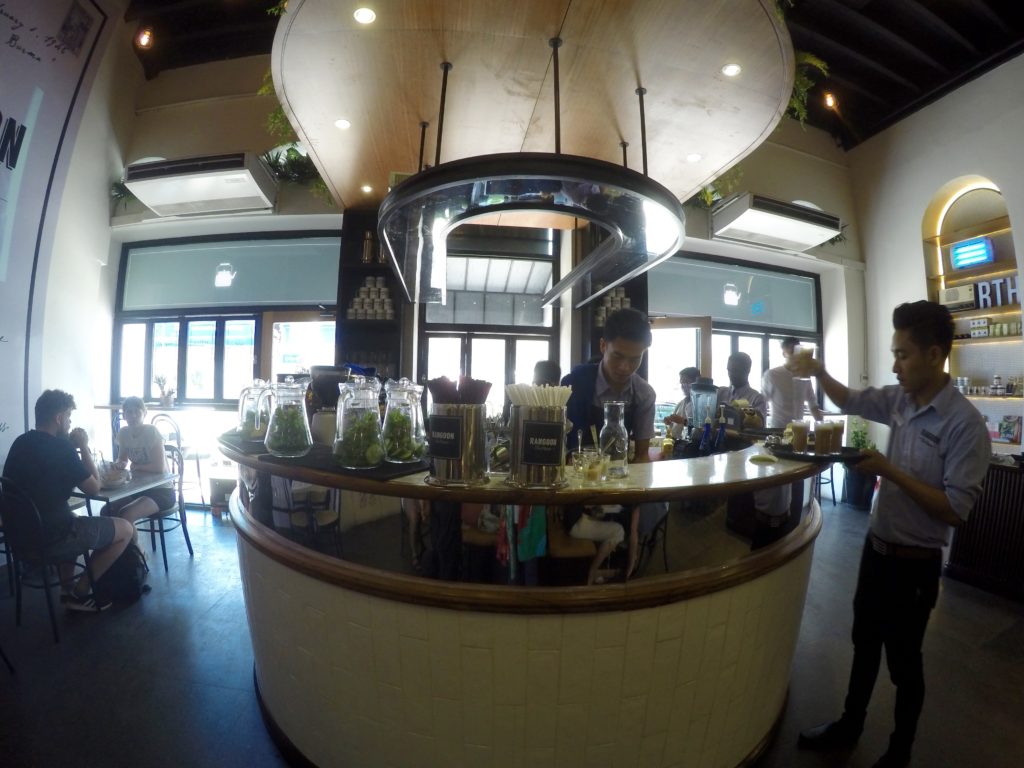
Rangoon Tea House
It’s no secret that I’m a lover of South East Asian beverages and Burmese tea is no different. The Rangoon Tea House (RTH) is a favourite amongst tourists and the expat community. While it is on the pricier side, they do serve up some amazing snacks and food with a wide selection of tea. The lower story is modern restaurant styled as a tea house while the upper level has a 1920’s decor and is really cosy.
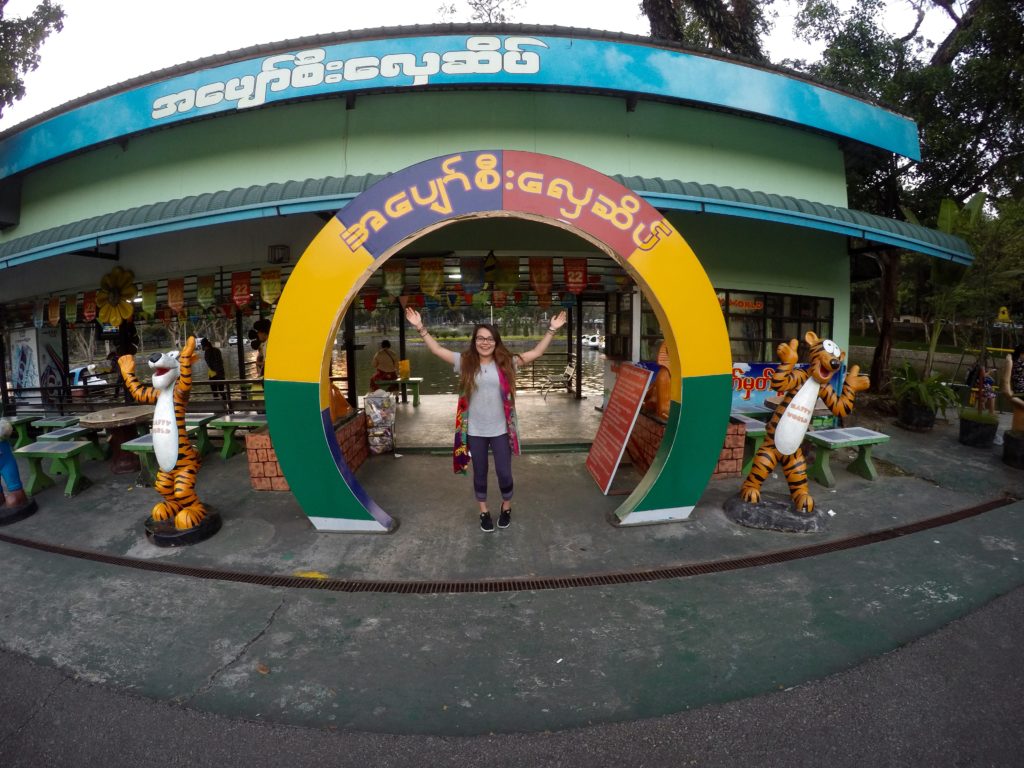
Happy World Amusement Park
This 22 yr old amusement park sat right outside the South gate of Shwedagon Pagoda. If you’re looking to have a good laugh, head over to this Amusement Park. The majority of rides cater to younger kids, yet there are still plenty of arcade-style games for everyone to enjoy. Entry to the park is about 500 kyats and there is an extra fee to play the games. If you have a few dollars to spare and are looking to mingle with the locals, this spot is for you.
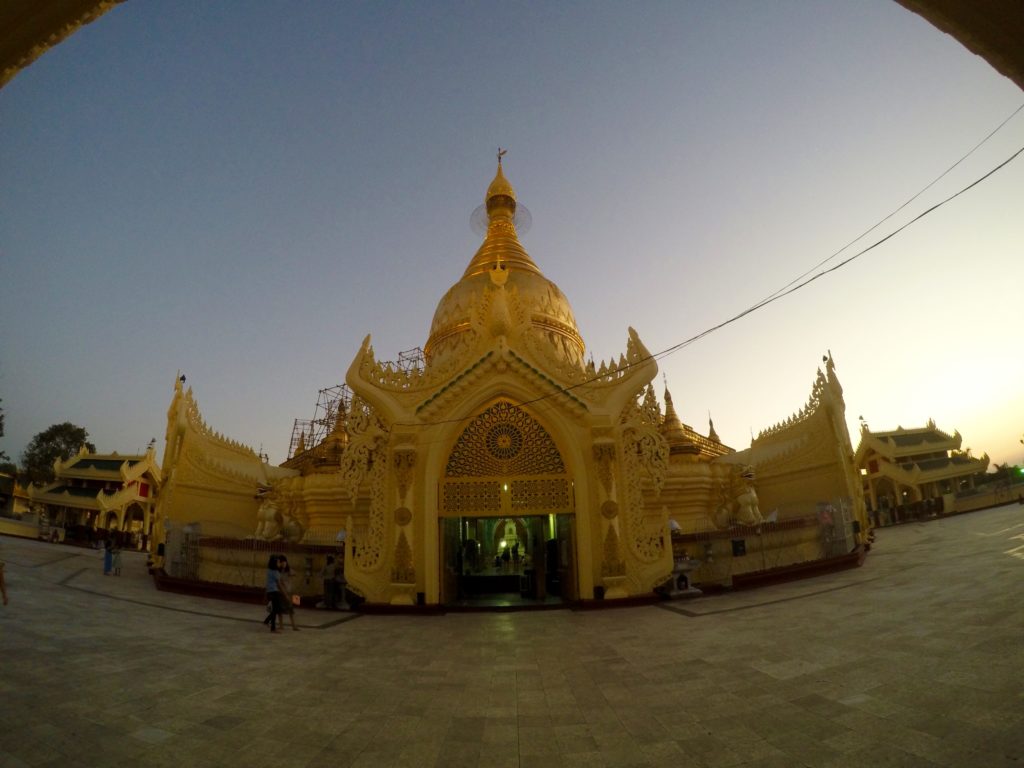
Maha Wizaya Pagoda
Across the street from both Shwedagon Pagoda and Happy World Amusement Park is Maha Wizaya Pagoda. An impressive pagoda, it is quiet and barely any crowds. On top of this, visiting the pagoda is free for everyone. In the centre of the shrine, there is an impressive mural on the dome depicting Buddha meditating under the Bodhi Tree. The design incorporates a mix of elements, with leaves and branches “growing” on the inner walls of the tree.
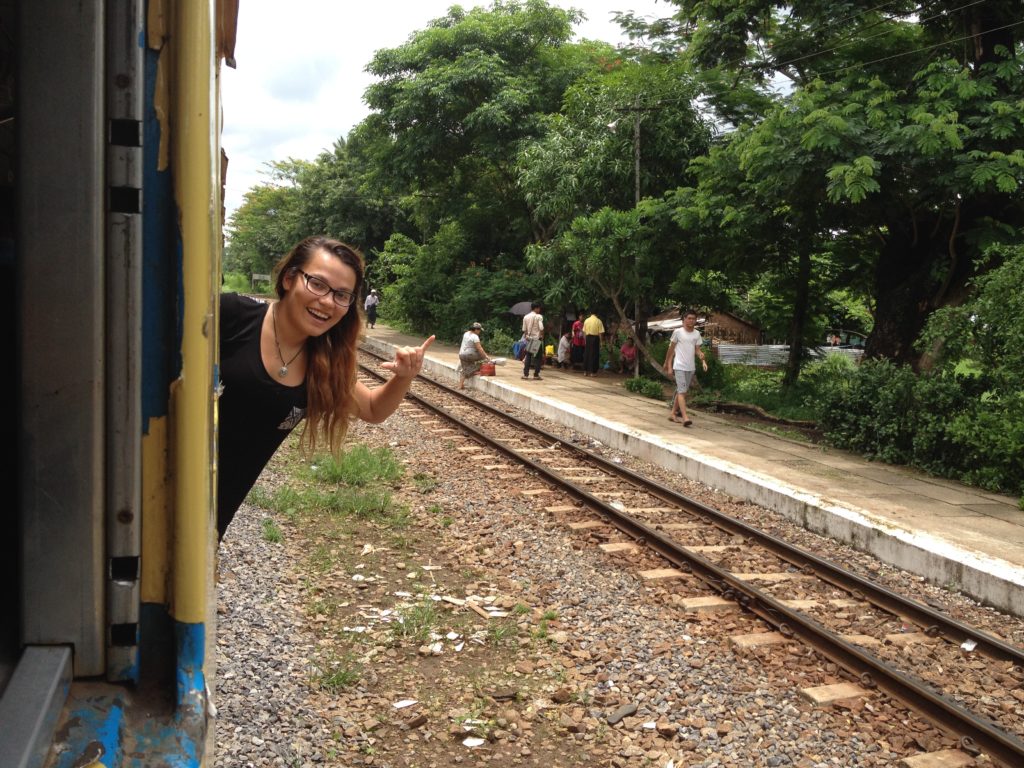
Circle Line Train
It’s not hard to get a glimpse of life outside of bustling Yangon. Travelling the entire circle would take 3 hours if you decide not to get off to explore. It’s an interesting journey especially to observe daily life. Livestock often travels on the train, with farmers transporting their produce between towns and hawkers walking up and down the aisles, selling fruits and snacks. I encourage you to spontaneously disembark and explore your surroundings. At the furthermost point of the journey, there is a market just on the side of the station. As it is uncommon for westerners to visit these parts, you’re welcomed to curiosity and excitement (especially if you’re a tall foreigner – my friend was stopped for photos).
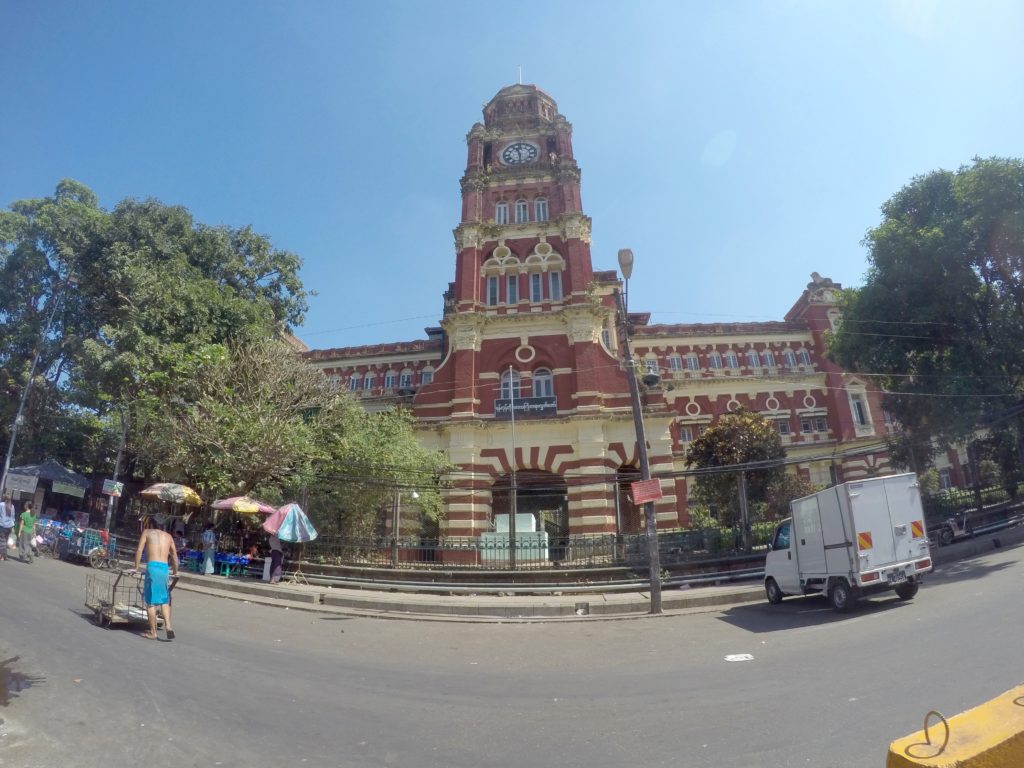
Lower Pansodan Street
Did you know Yangon has the highest number of colonial buildings in the South East Asian Region? Lower Pansodan St and the surrounding area is home to several of these buildings. Constructed in the 19th century, the area is reminiscent of over half a century of British Colonial Rule. While the Central Business District of the city encompasses this area, the government has relocated most offices to the capital, Naypyidaw. The fate of these buildings remains uncertain, but notably, one of the colonial structures has already been demolished. I would highly recommend visiting the area before it’s too late.
Yangon Map:
The following map contains drop pins of the attractions mentioned above.
[wpgmza id=”1″]
Well, there you have it! These are my recommendations of things to do in and around Yangon besides Shwedagon Pagoda. Having spent a reasonable amount of time in the city, it’s always great to venture into the local hangouts and get away from the crowds. The country is changing and adapting quickly due to the rise in tourism so, be sure to not miss the beauty of a city stuck in time before it fades away.
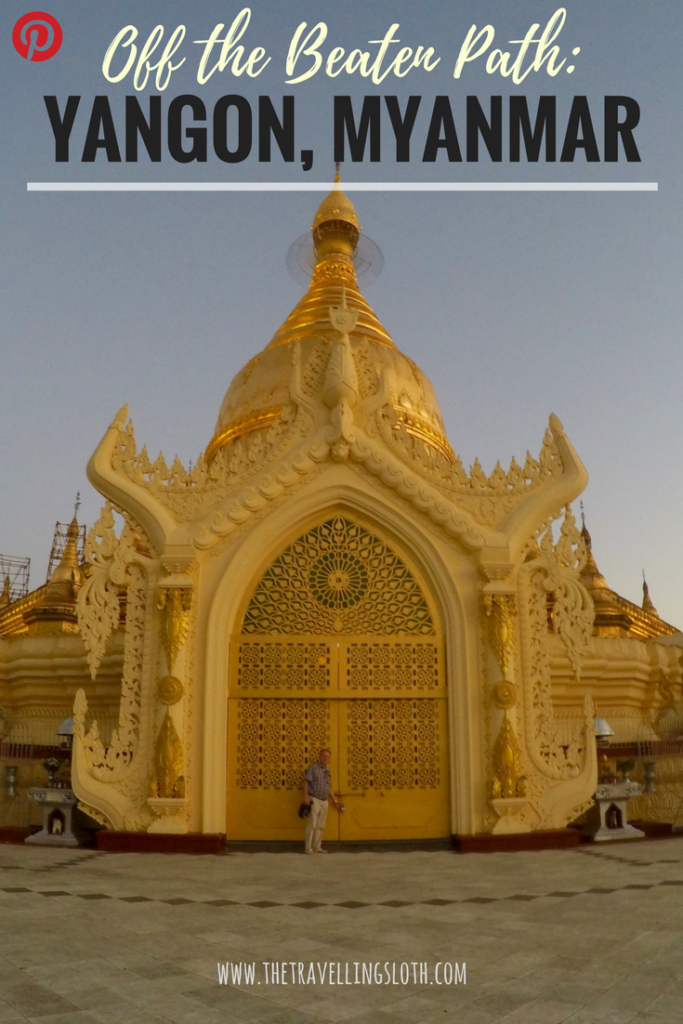
Peace, love and good vibes.

Leave a Reply